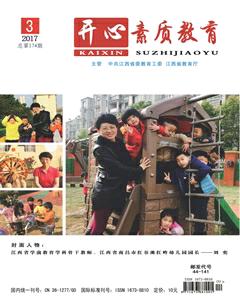新课标下高中英语词汇教学探究
乐瑚洁
一、新课程对高中英语教学的词汇的要求
新课程标准要求高中生能运用词汇理解和表达不同的功能、意图和态度等,并运用词汇描绘比较复杂的事物、行为、特征和说明概念等,同时学会使用3000个单词和400~500个习惯用语和固定搭配。
二、高中英语词汇教学现状
1.根据艾宾浩斯遗忘曲线规律合理根据生理规律记忆单词。学生记忆词汇时,最大的烦恼是遗忘。根据德国心理学家家艾宾浩斯(H.Ebbinghaus)研究发现人的遗忘是非常自然的规律。研究表明:人在记忆信息刚刚记忆完毕100%,20分钟后只有58.2%,1小时后44.2%,8~9小时后为35.8%,1天后33.7%,2天后27.8%,而6天后剩25.4%。同时他也证明通过复习能增加记忆量,并且第一次复习不应该迟于24小时。这就要求学生在记忆时讲究先密后疏,对于刚讲解的词汇要及时复习。随着时间的推移可以拉长复习的时间。为此,在词汇教学中,教师应向学生介绍构词法的基本知识。例如否定前缀dis-, in-, ir-, mis-, un-, im-;如un-unable, unfit, unhappy, unknown, unfair等;如教retell, rewrite,学生已掌握了tell, write,要向他们解释前缀re-的含义是“again”的意思。后缀不仅改变词的意义,而且使单词由一种词类转变为另一种词类。如加后缀-ese, -or, -er, -ian, -ist, -eer等表示人和物;如:thinker, actor, inventor, Chinese,Portuguese等;加后缀-ful, -less,-able, -ive, -ion, -ish, -ous, -ic,-al,-y,-ant, -ary等构成形容词。在教学中,教师日常帮助学生或让学生自己归纳总结,扩大他们的词汇量。比如知道able的意思是“能”,就可以知道able,enable,unable,ability,capable等都是和“能力”和“才干”有关系的;如果知道act=to do,todrive做、干、驱动,那么记忆act, action,actor,actress,active,activity,activate,actual,exact,reactor,interact,transaction等就非常简单了。知道了part=to separate的意思是“分离”,分开更可以记住一长串单词:parcel,partly,partial,partner,party,participate,participant,particle,particular,apart,apartment,department,compartment,depart,part,partition等。
2.巧用语义场理论进行词汇教学。如:围绕“看”的语义场展开,可归纳如下:glance, notice, observe, see, look, glare, glimpse, witness等,并可将其设计成篇章,以便记忆。如:Yesterday, I glanced out of the window and noticed a man observing a house opposite through a telescope. I thought I glimpsed a woman inside a house. Then I saw someone staring at the window of the same house. I looked at the house wondering what they are doing. Suddenly, the first man went, glared at the other and hit him on the head with the telescope and I realized that I had witnessed a crime.
3.情境教學法。教师可以创设丰富多彩贴近生活的情境,激发学生的词汇学习兴趣。特别是可以将生活情景再现课堂,这样真实、自然,学生的学习热情一下子就被激发出来。如学了light一词后可让学生用light编写一段话:Today was my birthday. When I came home with a light heart(adj.轻松的), my parents were busy preparing dinner. The light in the room was poor(n.光线), so I turned on the lights(n.灯). Now our room was bright with all the lights on.(n.灯)Soon dinner was ready. My father turned off the lights(n.灯)and lighted(v.点燃)the candles on the cake which lit up(v.照亮,使明亮)the room. Light music(轻音乐)was played. I prayed for my dream. When I opened my eyes, the lights(n.灯)were on again. In my mothers hand lay a present which was a light(adj.轻的)silk scarf with a light (adj.浅色的,淡色的) blue flower in the middle. How beautiful it was! How happy I was!又例如在学习高中英语新课标人教版必修2 Unit 2 Olympic Games时,学校刚举行完校运会,这时教师可以充分这个契机把学生抓拍校运会精彩时刻的照片作为新授课的教学辅助内容。当学生看到照片中熟悉的自己和同学时,注意力顿时就被吸引过来,变得极其兴奋起来。教师一边展示照片一边提问“What kind of sports did Student A (/B/C/D…) take part in?”学生就会根据画面内容热情高涨地回答一些运动名称:relay race, 100-meter race, 200-meter race, 800-meter race, high jump, long jump, shot put…
4.课内课外相结合,充分利用课余时间,激发学生使用词汇,巩固并扩大词汇量。词汇教学是高中英语教学的基础,也是重要内容。我们教师应按照新课标的要求,遵循中学英语词汇教学的原则,认真地分析学生在词汇学习情况,并根据不同的情况,采取不同的词汇教学方法,才能使学生对词汇学习感兴趣,才能有法可循有样可学,积极学习,从而达到提高高中英语词汇教学的效果。(作者单位:江西省赣南师范大学科技学院英语134班)

